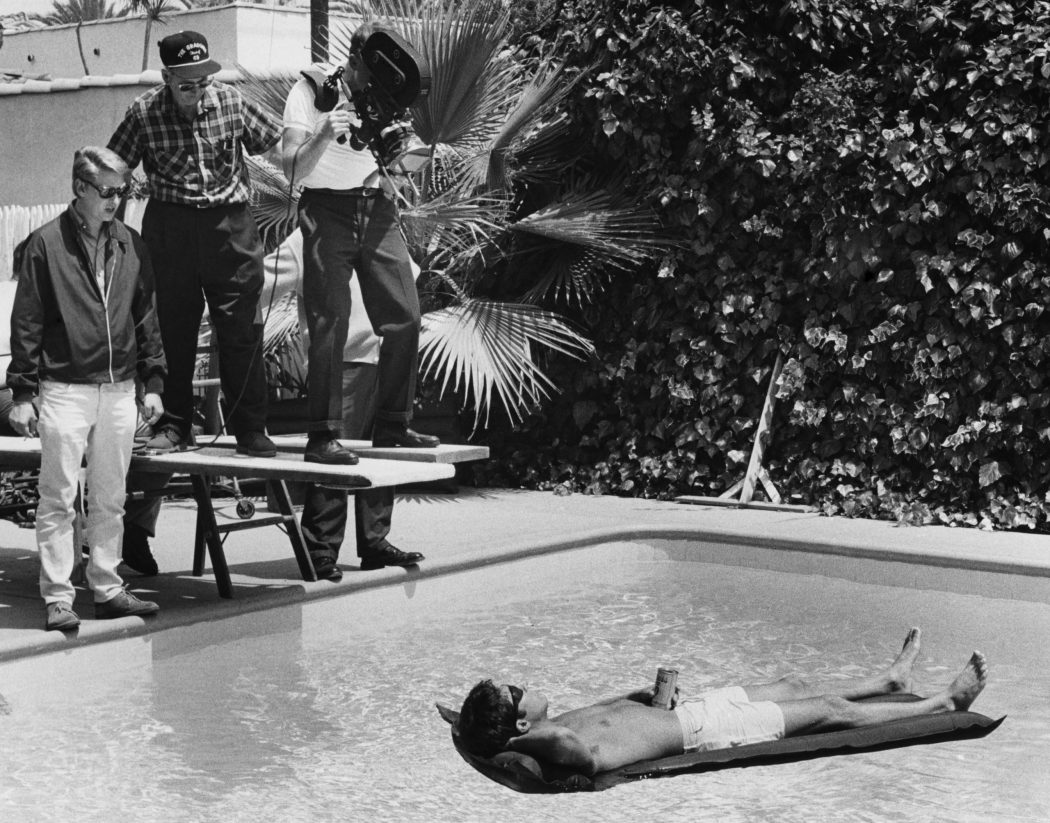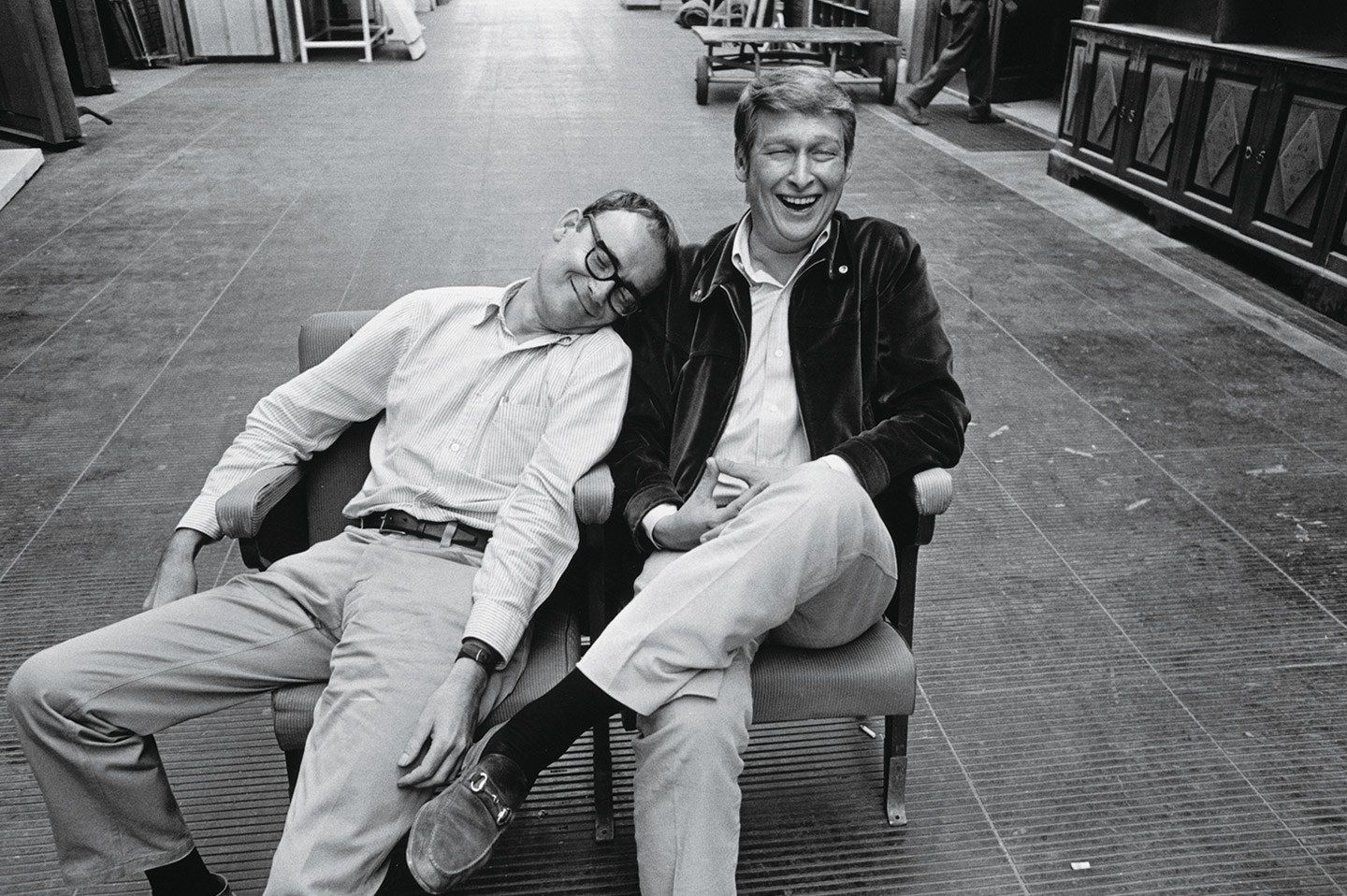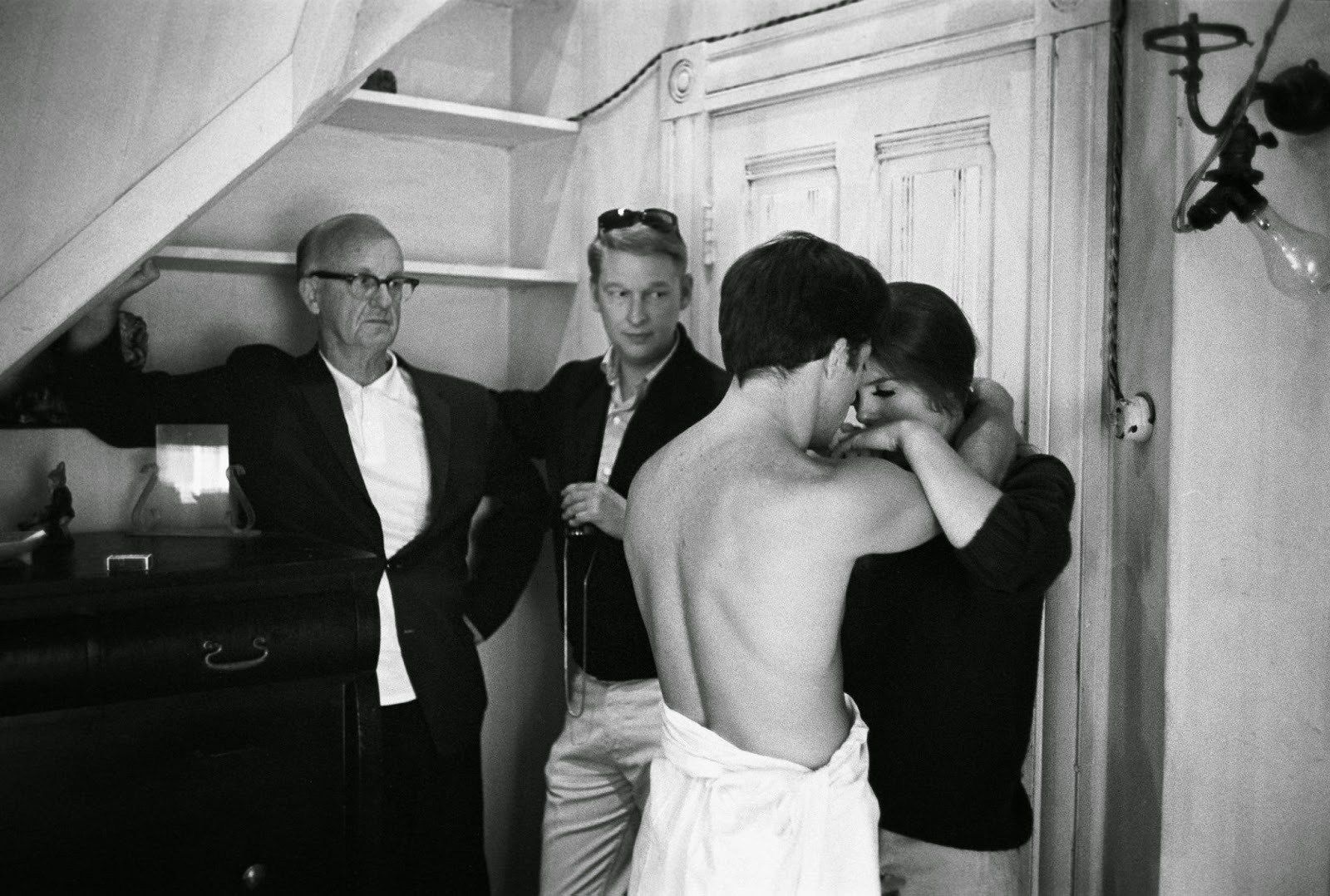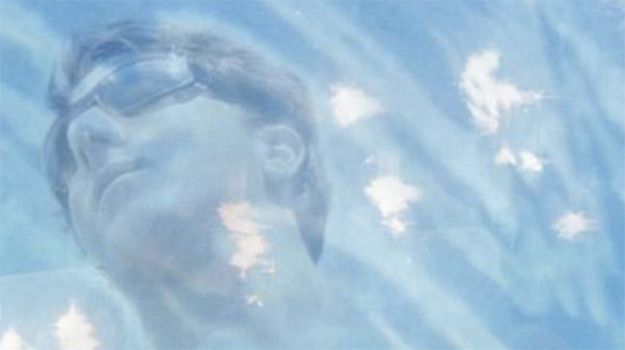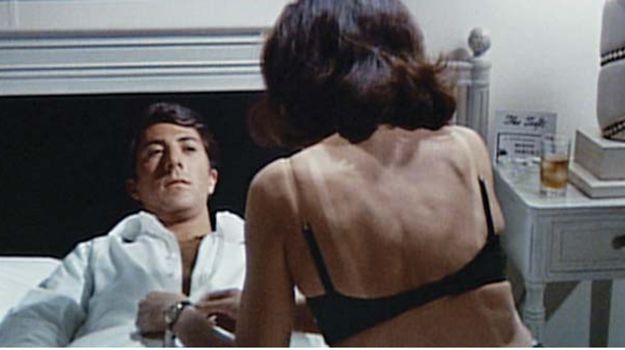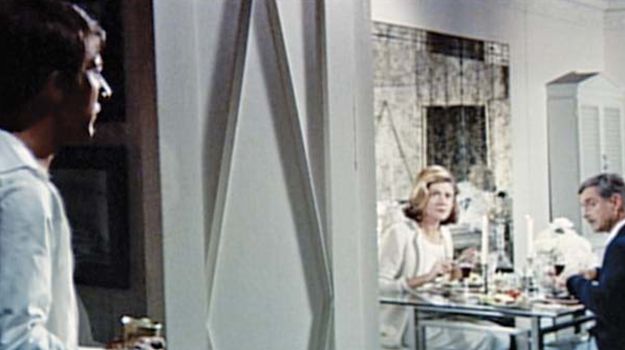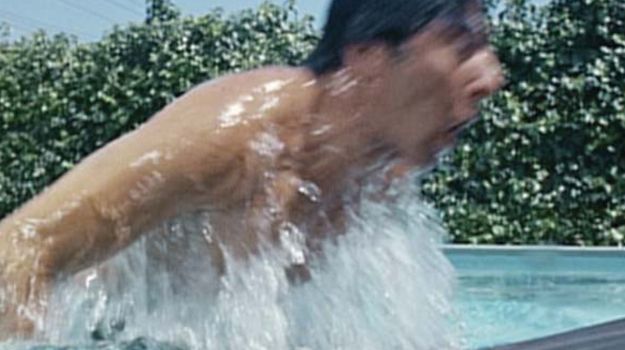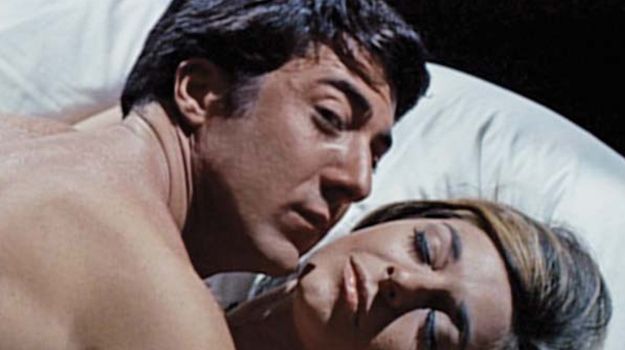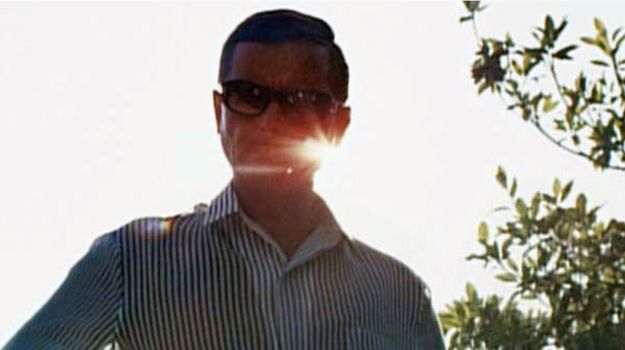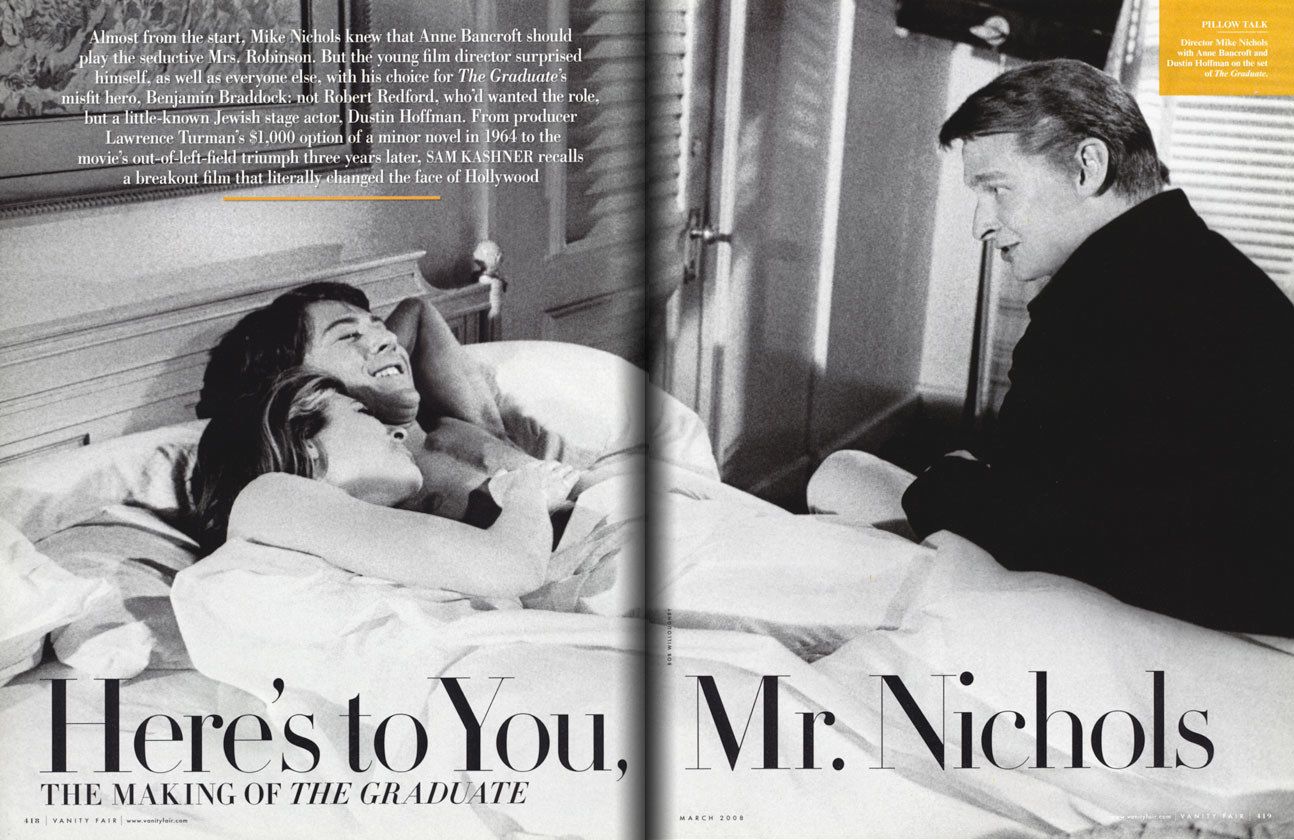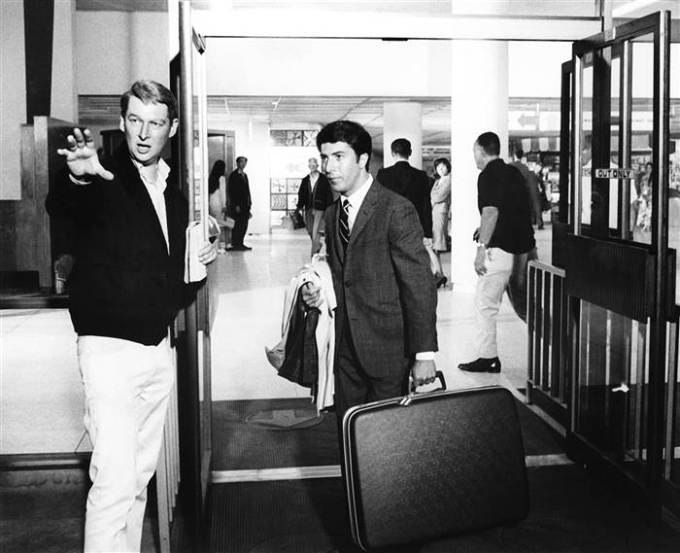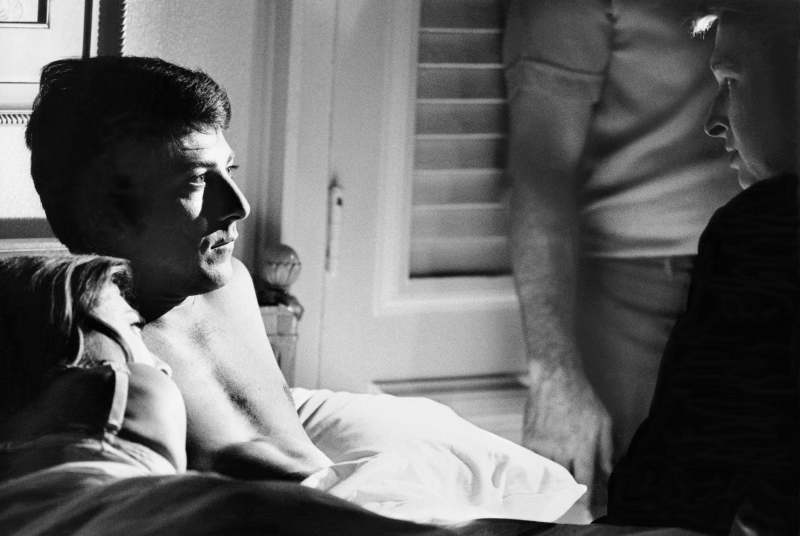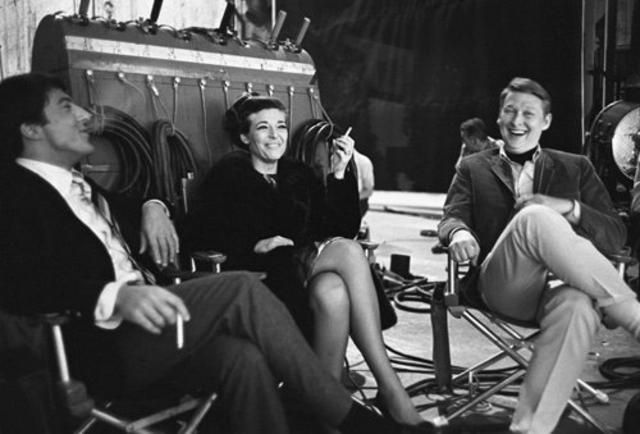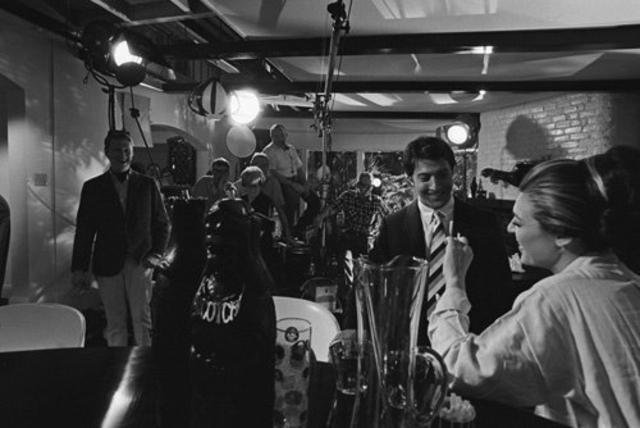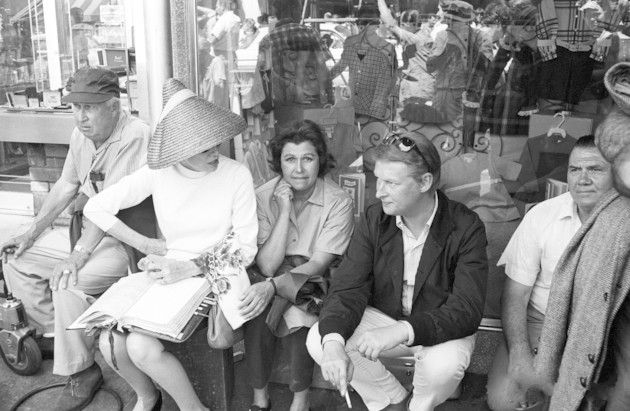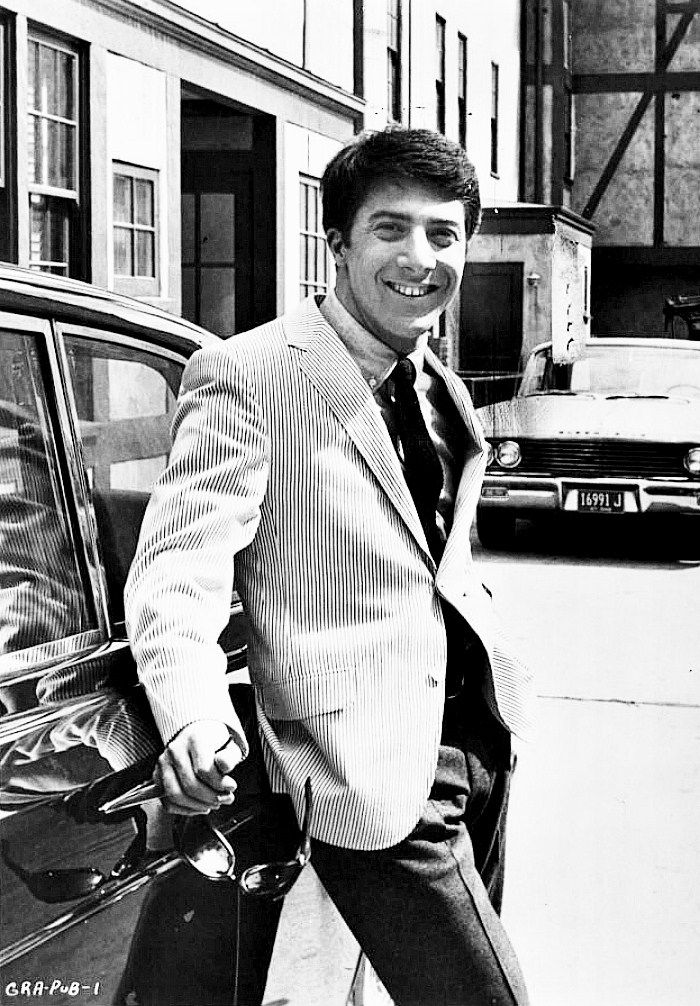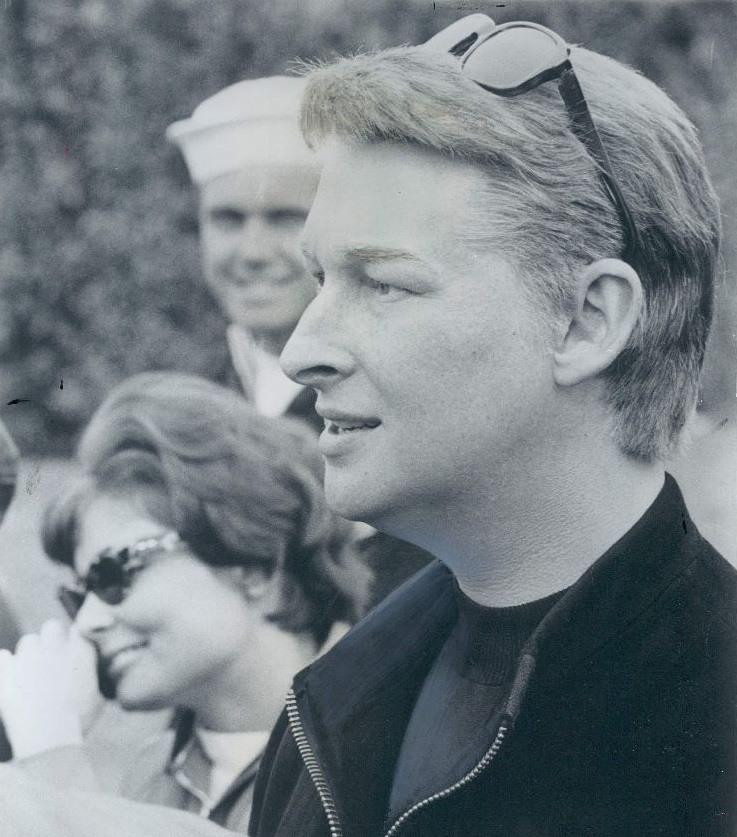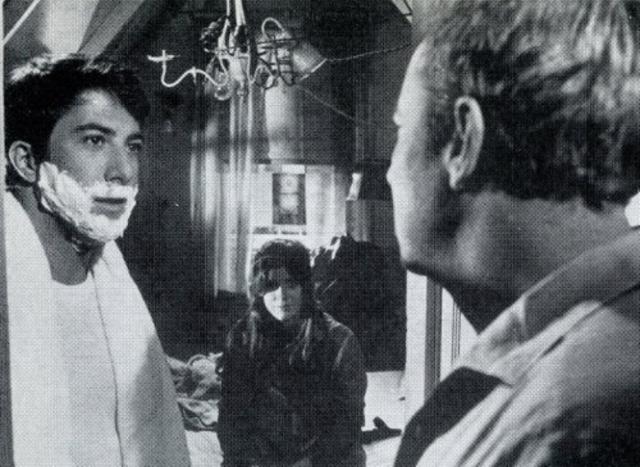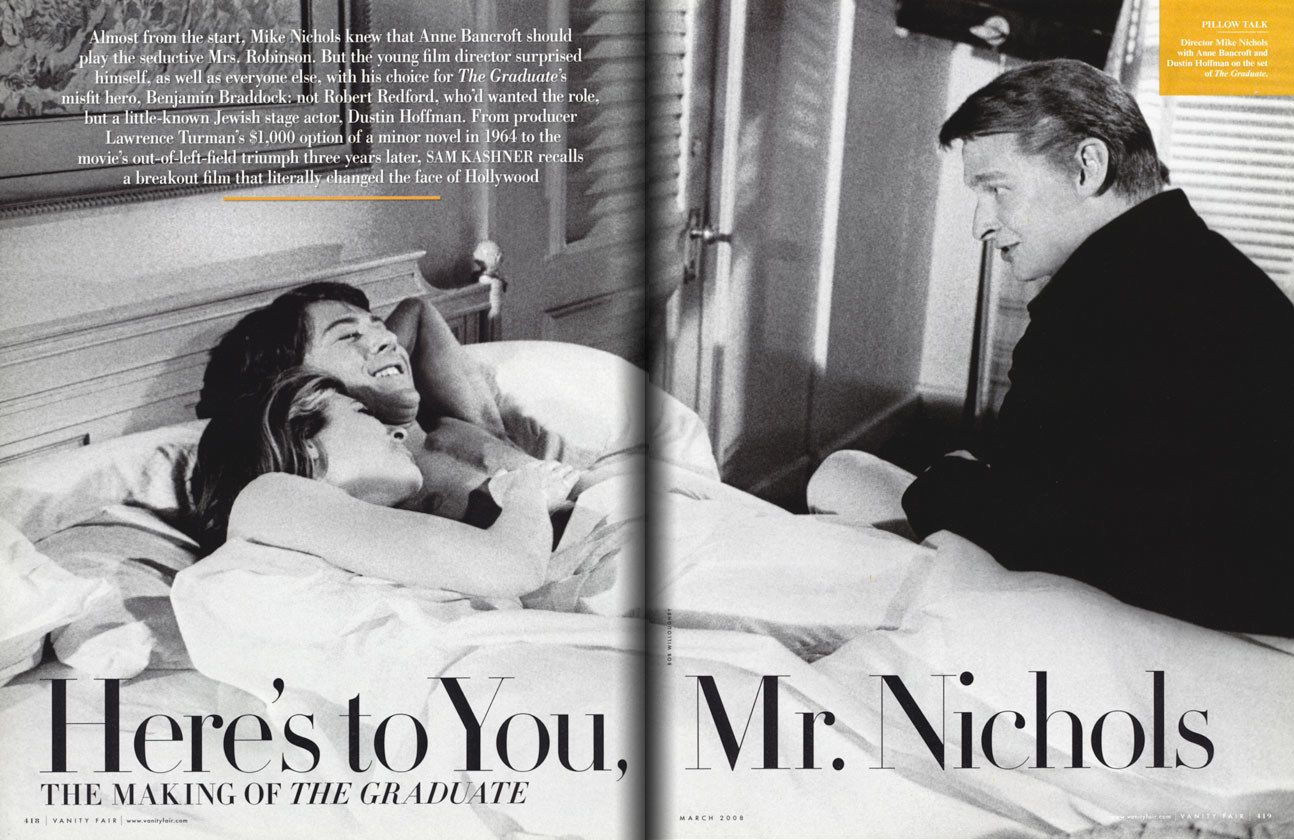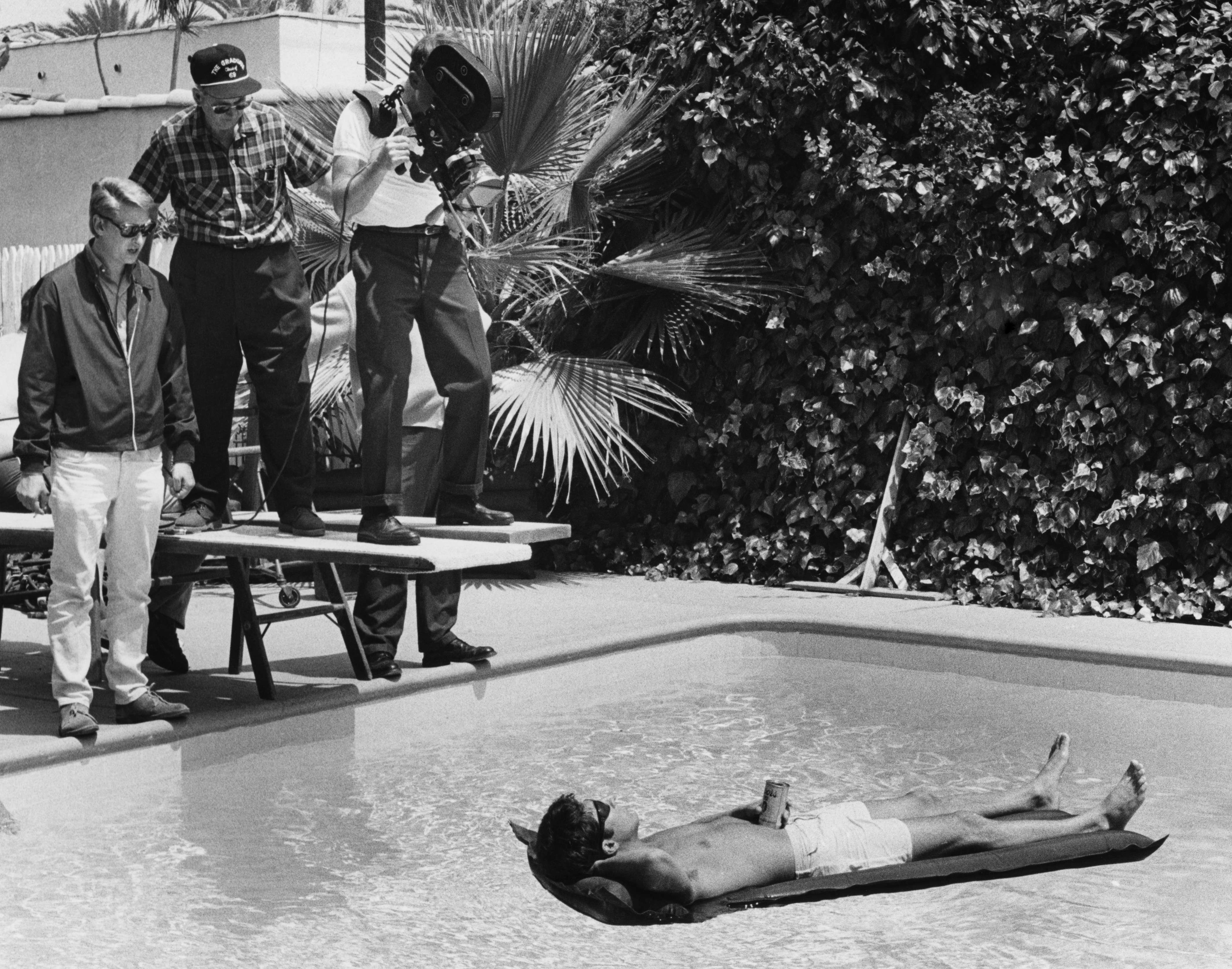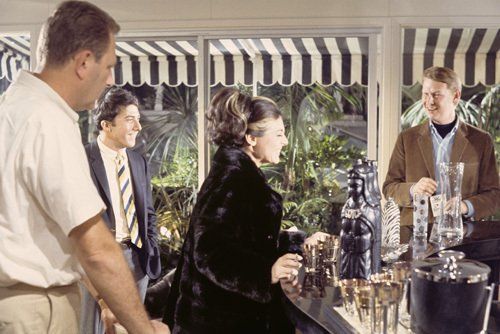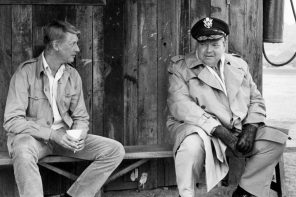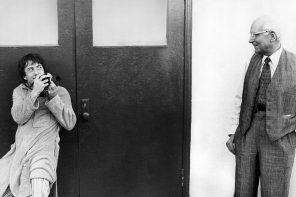By Sven Mikulec
“Turman, you son of a bitch, you got me into a movie that can’t be cast!” These words were allegedly uttered by the great director Mike Nichols to his producer Lawrence Turman, a sentence in all likelihood stated in a half-serious manner, but full of frustration and impatience stemming from the fact Nichols and Turman were on a seemingly neverending casting roller-coaster. The individuals portrayed in The Graduate were so far from any stock characters it was mission impossible to find the right people to bring them to life. The project was definitely Turman’s baby: for a meager thousand dollars he purchased the rights to Charles Webb’s 1963 novel of the same name. He managed to acquire it at such a low price simply because there was literally no interest in Webb’s story. Turman saw the potential no one else did—the potential that would lead to the creation of not only one of the quintessential American films of the sixties, but also one of financially most successful pictures that ever came out. At that time, Hollywood was almost utterly oblivious to the fact Mike Nichols existed. He was a successful comedian-turned-Broadway director who, at least in Turman’s mind, seemed a perfect match for this project due to his comedic sensibilities. The Graduate was supposed to be his Hollywood debut, but as he was offered to helm Who’s Afraid of Virginia Woolf? at that same time, he chose the black comedy drama penned by Ernest Lehman as his first project. The success of this film only helped The Graduate, as Nichols garnered a lot of praise and was introduced to the filmgoing community as a factor that couldn’t be ignored.
As Nichols liked Webb’s source novel just as much as Turman did, they agreed to proceed and hired screenwriter and novelist Calder Willingham (Paths of Glory, Spartacus) to do the script. Considering his version too vulgar, Nichols approached young comedic actor Buck Henry, who literally had no screenwriting experience, but was deemed ideal for the job by the then 33-year-old Nichols. Willingham and Henry’s screenplay, heavily relying on Webb’s writing, was an intellectual, exceptionally witty take on the confrontation of the Old and New America: the protagonist, a college graduate returning to his suburban home to contemplate on his future, sexually insecure and bewildered by the stupefying stupidity and superficiality of his familial surroundings, gets seduced by an older woman, eventually falling in love with her daughter and eloping from his community by sticking a cross in the church’s door. If shaped by some other minds and sensibilities, this story might have turned out a failure of cosmic scales. In Nichols’ vision and with the refreshingly honest performances of the main cast, The Graduate was an instant hit that struck the chords in all corners and layers of the American community.
Robert Redford was apparently eager to get the role of the central character, Benjamin Braddock, but Nichols thought he was far from being the perfect match, as it wasn’t likely he would be able to successfully sell the image of an insecure, socially uncomfortable young man unaccustomed to having success with the ladies. Dustin Hoffman came like a blessing from Heaven: his costar Katharine Ross, chosen to play his love interest Elaine, described him as though “he crawled out from under a rock.” Dark, short, nervous and pale, he was an antidote to the image of golden-haired, blue-eyed, nicely tanned Californian masculine prototypes. Convinced his audition was a disaster, Hoffman returned to New York dispirited, but Nichols was elated with the panic, insecurity and honesty the practically anonymous Off Broadway actor had displayed in front of the camera, and soon his career and reputation soared unbelievably.
Shot by Robert Surtees, edited by the esteemed Sam O’Steen and featuring the unforgettable melodies of probably the most famous folk-rock duo ever, Nichols’ film aged well, as it’s still a rewarding experience to go back to those humorous, Simon-and-Garfunkel-energized scenes that found its way into the collective memory with ease. An indisputable importance of The Graduate also lies in its influence, hardly limited to the field of pop culture: Mike Nichols’ sophomore Hollywood project paved the way for the new era of filmmaking in America, allowing film directors to enjoy more autonomy, power and prestige than ever before in Hollywood history.
A monumentally important screenplay. Screenwriter must-read: Calder Willingham & Buck Henry’s screenplay for The Graduate. Based on the novel by Charles Webb [PDF]. (NOTE: For educational and research purposes only). The DVD/Blu-ray of the film (new 4K digital restoration, with uncompressed monaural soundtrack on the Blu-ray) is available at the Criterion Collection and other online retailers. Absolutely our highest recommendation.
 Loading...
Loading...
Henry Zuckerman, better known as legendary screenwriter Buck Henry, the writer of The Graduate, Get Smart and The Day Of The Dolphin talks about his life as a writer: “The good films are still pretty damn good. But in some cases the really good films are just too remote from the big audiences. The films have plunged ahead, but the audiences have dropped behind. I hate that the New York Times does a piece on the grosses virtually every day, in the arts section. They’re doing it for theater now too, and it makes me sad. It makes it more difficult for difficult things to get done. And filmmakers and playmakers have to keep an eye out for the people online who consider themselves critics. Mostly they’re illiterate—and I’m awfully sorry about this—everyone who writes for the Huffington Post and particularly the stuff on AOL, it is totally illiterate. They cannot write a complete sentence.” —Inside guy, Buck Henry
A special thanks to Brian Streem for this priceless gem: “I first discovered this while working at Criterion—I did a quality control check on an old HDCAM tape of this. I subsequently bought a LaserDisc player and the LaserDisc to this film. I’ve mixed the audio for all my fellow cinephiles to enjoy.” This is the commentary that all other commentaries should be measured by. Oh dear Lord, what a commentary! This track is on par with the Michael Jeck commentary for Seven Samurai, but it’s only available on Criterion’s LaserDisc. The film’s scholar, Howard Suber, takes you through all aspects of the production and script, from the significances of harsh and soft lighting, to the elements which are NOT in focus, to the overall arch of Benjamin’s character. Once you hear this track by Howard Suber, you’ll want to hear his others. This is an absolute must-listen for any student of film. —ratethatcommentary
Here’s another commentary with director Mike Nichols and filmmaker Steven Soderbergh.
The Graduate was released in 1967 in the eye of America’s radical cultural shift led by the country’s alienated youth. Directing his second feature, Mike Nichols unwittingly found himself with a zeitgeist movie and an instant hit. The film’s anti-hero, Benjamin Braddock (Dustin Hoffman), drifts from his post-college life at home with his parents to an affair in a hotel room with their best friend, Mrs. Robinson (Anne Bancroft). Nothing holds meaning for him and he has become passive and numb as he contemplates his future. It’s a highly subjective film with everything filtered through the eyes of its protagonist. What is probably only a few months in real time passes timelessly in Nichols’ iconic, illusory montage famously accompanied by Simon and Garfunkel’s score. “We very consciously thought of the movie as a dream, and just beginning to wake up from it at the very end,” says Nichols, who, with screenwriter Buck Henry, planned from the early writing stages the complex sequence that encompasses most of Benjamin’s affair with Mrs. Robinson.
Nichols also worked with production designer Richard Sylbert to design and build the interior of Benjamin’s home and the hotel room to match each other in ways that would allow clever cuts and framing to disguise the transitions between locations. “We did a lot of fancy camera shit,” says Nichols, “but nobody has ever mentioned it in 40 years because if you have events that are compelling you’re completely unaware of what the camera is doing, which is the idea.” The result is a fluid journey through Benjamin’s psyche, perfectly translating his troubled state of mind to images on the screen.
In The Graduate, Nichols captured not only the delicate mental state of his anti-hero, but the despair of the nation’s youth. The director looks back at how he shot one of the film’s most iconic and dreamlike sequences. Courtesy of Directors Guild of America’s Rob Feld.
“‘Hello darkness,’ the opening line from Simon and Garfunkel’s ‘The Sounds of Silence,’ starts over a black screen and the pool fades in. Buck Henry and I knew we didn’t want a realistic picture and the most surreal thing in it is this montage, covering not only a lot of time but inner time. We had a filter that was crosshatched to cause those little sparkles in the water. We called it ‘Sparkle Plenty.’ The water wasn’t lit or colored; it’s all filter and sunlight, and I think we had guys doing that pedaling-thing to move the water. We shot a half-hour of water, and after 10 minutes of watching dailies, Larry Turman, the producer, said, ‘I think the small ones are winning.’”
“We faded into Dustin and then cross-dissolved into all the shots of him on the diving board, over the water. I just said, ‘Do various things, let me see you turn, let me see you turn slow,’ and then we put it together in the cutting room. I think we overcranked some of his moves—I don’t know which we used because the dissolves are very long and he’s moving in some of them. I always wanted to leave as much water in the frame as I could because it was about the nowhereness of Benjamin’s experience. Seeing just him wouldn’t have been as expressive of that. It was the prison as well as the prisoners.”
“The house was chosen for the pool and the outside. We used long lenses for almost everything—150 mm or more. Dustin looked much better with a long lens (as we all do) and it took some of the reality out. We’re set up against the bushes of the pool. My idea was that the whole thing was about a kid who’s battling passivity. He’s surrounded by and drowning in objects in his middle-class family, in a super middle-class environment. He is expressionless because he’s desperately trying not to become an object, which you see from the first frame.”
“Here it looks like Benjamin is entering his house and we cut to inside the Taft Hotel set. It took us a good week, maybe two, to talk through this montage. What I realized very early was that if this idea was going to work, you could not know where he was in the next place, so that it’s truly seamless. And that’s what we did. It was simply matching, matching, matching, matching. You have to do two places that match. Everything had to hide the fact that we’re going to be in another place until you see, Oh, look, it’s another place.”
“So this is the Taft Hotel, which is a set. I wanted it to match the last shot exactly—the lighting, the camera level are the same; we measured all that. Dustin goes in one size in one shot, comes out in the next. Maybe we cheated in the cutting room, we’re a little closer. This was all storyboarded, for obvious reasons, and I got Richard Sylbert, the production designer, to draw it up to see what the hotel and home sets would have to have in common to be able to do the back and forth between Mrs. Robinson in the hotel and Benjamin’s house.”
“We panned and tracked to get him to the bed. We’re still fairly far back on the set with the zoom. Basically the look of the picture is that zoom. I think we used it on almost everything. It’s constantly moving in and out. It also helped the match enormously because we didn’t have to switch lenses. We were just setting on the zoom that worked. I wanted to express the despair of an affair that is just below the waist and he has no real connection to it, so the montage is how it goes on once conversation fails. It’s quite extreme but it needs to be. There is no interpersonal interaction. It’s not just for good taste that we skipped the sex.”
“Dustin and I understood each other about Ben’s inexpressiveness, which was his particular gift. He was good at the depersonalization of the character, he knew about it. And we rehearsed and rehearsed. Dustin kept saying we could have done it on Broadway we had rehearsed so much, but not just doing the scenes. We improvised their relationship with the other family when they were little, and around the pool. We explored all that shit. We knew everything about it by the time we were shooting because we knew we had to shoot very fast. The lighting was all bread and butter. That was [DP Robert] Surtees. He just automatically did that.’”
“We pan with him and, obviously, he’s shutting his parents out. He’s living apart from them in their house, but he’s also living apart from Mrs. Robinson in the hotel room. Both the house and hotel sets were meant to be as blank as possible. I wanted emptiness in these places and I didn’t want them to have a lot of characteristics. I just wanted what it was to him. What guy would see the décor anyway? It has no meaning, it’s just blank. We see him having no pleasure, not seeing any of the beauty in the world.”
“The camera stays stationary on Ben until Mrs. Robinson leaves. She goes through the frame, back and forth, which I planned months before with Buck because I wanted to see this for the matching. The light is supposed to be coming from the television; the idea is that he’s pulled into it. To get Ben’s reflection, the mirror is in a completely idiotic place. We moved it and the bureau right next to the door so we could get him and not have to cut. The ‘slam’ when the door closes behind Mrs. Robinson is the only time you hear sound, and that had to be because it lands him at home on the cut. Sam O’Steen and I found that while editing.”
“Benjamin has walked out of the last shot at home and I wanted him to walk into this one. We didn’t pan to him here. This moment is about his mother’s despair; it looks like exasperation, but it’s despair nevertheless, just like everyone else’s. His mother’s hair, the way he doesn’t look at her, everything, it’s all like Mrs. Robinson. He’s totally alienated from everybody, just short of disturbed. And the design is the same grid. The camera stays stationary as he gets smaller, going on his senseless journey and diving into the pool.”
“We were set up in the water and he jumps in and swims. The color just happened by itself. In fact, I was miserable about it for weeks because the water looked cloudy. Katharine [Ross] had busted Dustin’s eardrum, hitting him in the scene in which she realizes he’s had an affair with her mother, so we had a hard time when he was diving. He had all sorts of plugs and things to protect his eardrum. He just swam toward the camera. Again, it was storyboarded and I knew exactly what I wanted. I wanted him underwater, I wanted to see him coming out, landing on Mrs. Robinson and the raft at the same time—cut, cut.”
“This was from poolside with the zoom, the song ended right here. [At first] I couldn’t figure out the score and my brother sent me that Simon and Garfunkel record. I thought, ‘Holy shit! This is my score!’ We just dropped in ‘Hello Darkness’ and we were beside ourselves! It was terrifying how it fit. And then we added ‘April Come She Will.’ The miracle of that song fitting is that it’s about time passing and losing love—the additional coincidence seemed almost impossible. I have a theory that when something is working, when it is in tune with itself, with the people doing it and the world around it, it becomes a kind of magnet that draws the right things to it.”
“You kind of see Mrs. Robinson’s face in the hotel room as she’s passing by, but here is the first time you really see it, and she’s checked out. It’s what she was after: oblivion. And then Benjamin hears his father’s voice: ‘Ben, what are you doing?’ and he looks up. I wanted a moment here. I didn’t want to say: He’s on the raft! Are we cute or what? It’s that thing you decide when you’re editing—you don’t know until that moment if you like something better than the other way. Sometimes it’s as simple as that. And this could all be his fantasy until we cut back to the raft.”
“This is Ben looking up at his father from the pool. We were on a hard lenses here, about 150 mm for the singles. Shooting into the sun was something we found and it was a tremendous help; it wasn’t preplanned. The sun makes his father kind of godlike—he has all this power and has nothing in his head at all. I think it was Surtees who said there was time on the day to shoot everything into the sun. It was so surreal, Ben couldn’t quite see his father. I was very happy with that. Surtees was a great DP and I learned a lot from him. That sun thing was the perfect ending for this scene.” —Mike Nichols on The Graduate
Few American directors have done as much or been as synonymous with quality projects. From The Graduate to Angels in America, Nichols has raised the bar for literate filmmaking. His secret? Keep it simple. Courtesy of Directors Guild of America’s Jeffrey Ressner.
Who’s Afraid of Virginia Woolf? was a famous play, The Graduate a not-so-famous book. How do you pick the movies you choose to make?
It’s the hardest part of the process. In the end, it has to be something I feel, whether it’s true or not, that it’s meant for me, that I know more about this particular thing than most people and I know what to do. I know its secrets. It is, of course an illusion, but it’s like falling in love. You say, I know this person, I knew this person before, we understand each other. You have to have that kind of connection to a story, to a piece of writing. It’s so you can say when you’re casting, ‘No, I haven’t seen them yet—I need somebody who’s more powerful or somebody who’s harder to read.’It’s tough to imagine anyone but Dustin Hoffman as Benjamin Braddock in The Graduate, yet Charles Grodin and Redford were considered for the part, while Ava Gardner was mentioned for Mrs. Robinson. You’ve said, ‘Casting is the job as far as opening the veins is concerned.’ Do you have any hard and fast rules?
It changes. It’s been, I can’t say easier, but more pleasant since I’ve made my prime rule for casting, both for movies and plays, which is: NO ASSHOLES. It’s an amazing thing what a difference it makes. You have a company and you have to protect everyone—one asshole and it can all be spoiled. One person who says, ‘I’m not coming out until he’s out of his trailer.’ One person who says, ‘Well, he has five jokes in this scene and I only have one.’ One person who brings the nursery onto the set is enough. By the way, a prop man can do it too. It’s a large group, that crew and that cast, and you need people who can lose themselves in the central process and idea.You also believe that putting the crew together—‘the machine,’ as you call it—takes a quarter-century to get right.
Yes, for a very specific reason: especially in Hollywood, but everywhere in movies, whenever you ask about anybody else, it’s always ‘they’re a wonderful, wonderful person.’ You have to judge them yourself. As time passes, you put your group together of people you can’t do without. My group has been with me for centuries. Mike Haley, my first assistant, was the second assistant on the silliest movie I ever made, The Day of the Dolphin, but he made it possible. He’s the one who wasn’t afraid of George [C. Scott] and made George laugh and who mooned every Thursday and kept it a hilarious set. We’re still working together. There are many people in my group, at least 20. The other thing that happens is that some of them, sadly, die; some of them retire; and some of them go on other pictures.One close crewmember was the late production designer and art director, Dick Sylbert. What did you learn from him?
Detail. It was Sylbert who said, ‘wouldn’t it be nice if Mrs. Robinson had the strap marks on her from when she was sunbathing in her bathing suit?’ And they would put those on Bancroft everyday with makeup. I could say, ‘I knew this couple at the University of Chicago and they had bookshelves made out of board and bricks.’ From that one description, he knew their entire house. It’s a question of sharing references and being able to refer to certain people you’ve known in life, and the art director saying, ‘Yes, yes, yes, I know exactly that sort of jade mug and the white enamel kitchen table it goes on.’ If he remembers it and you remember it, with luck the audience will remember it—even though they weren’t there. —Mike Nichols, Working Man
For a previously unknown actor named Dustin Hoffman, the success of The Graduate was a “happy accident,” according to CBC interviewer Moses Znaimer. Sudden fame means Hoffman has been careful not to be trapped into playing Benjamin Braddock for the rest of his career. In this conversation with Znaimer, a slightly guarded Hoffman describes his latest role, as Ratso Rizzo in Midnight Cowboy, and ruminates on acting, fame and selling out.
Mike Nichols’s American classic launched the career of Dustin Hoffman and made him one of the most sought-after actors of his generation. Up to that point, Hoffman had mainly been performing off-Broadway and taking small roles in film and television. But his turn as Benjamin Braddock, a befuddled college graduate who returns to his parents’ home and falls into a romantic affair with an older woman, earned him an Academy Award nomination and set the stage for his illustrious career. The new Criterion Collection release of The Graduate—out this week on Blu-ray and DVD—features a new interview with Hoffman in which he shares about the life-changing experience of working on the film. In the clip below, he talks about his initial screen test for the role (opposite Katharine Ross), and how Nichols helped him hone his nervous energy into one of modern cinema’s most memorable performances.
Mike Nichols speaks about directing and Dustin Hoffman and Paul Simon describe working on The Graduate, for which Nichols won an Academy Award. The new documentary American Masters: Mike Nichols, directed by Elaine May, premieres January 29 on PBS.
The documentary Becoming Mike Nichols, which premieres on HBO on February 22, is a tribute to Nichols’ career and legacy. Shot interview style over the course of two nights at Broadway’s Golden Theater, it’s a revealing look at the early life of Nichols, who died, at age 83 a few months after it was shot. Directed by his friend and filmmaker Douglas McGrath, it’s an intimate look at Nichols talking about his earliest beginnings from childhood, to directing and his entertaining start as an improvisational actor with actress Elaine May. —Becoming Mike Nichols: The Documentary
Almost from the start, Mike Nichols knew that Anne Bancroft should play the seductive Mrs. Robinson. But the young film director surprised himself, as well as everyone else, with his choice for The Graduate’s misfit hero, Benjamin Braddock: not Robert Redford, who’d wanted the role, but a little-known Jewish stage actor, Dustin Hoffman. From producer Lawrence Turman’s $1,000 option of a minor novel in 1964 to the movie’s out-of-left-field triumph three years later, Sam Kashner recalls a breakout film that literally changed the face of Hollywood. —Here’s to You, Mr. Nichols: The Making of The Graduate
A glittering cast of Nichols’s friends share with Sam Kashner and Charles Maslow-Freen their stories of a refugee from Hitler’s Germany who lived his own inimitable version of the American Dream. Tom Hanks, Meryl Streep, Dustin Hoffman, and more remember the comic genius, a groundbreaking director and true bon vivant. —Mike Nichols’s Life and Career: The Definitive Oral History
Bob Willoughby’s classic behind-the-scenes photos from the set of Mike Nichols’s 1967 film © United Artists. Intended for editorial use only. All material for educational and noncommercial purposes only.
If you find Cinephilia & Beyond useful and inspiring, please consider making a small donation. Your generosity preserves film knowledge for future generations. To donate, please visit our donation page, or donate directly below:

